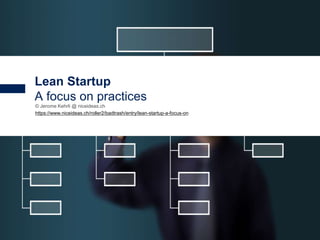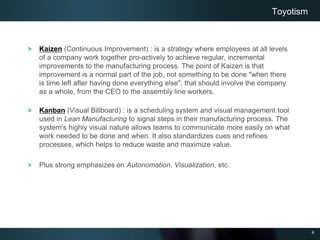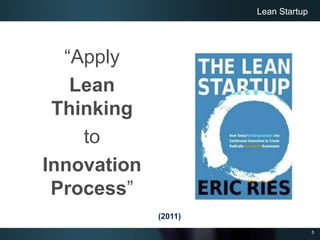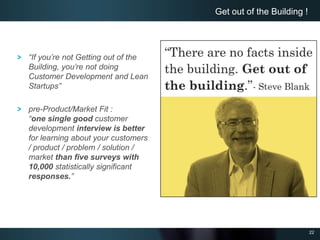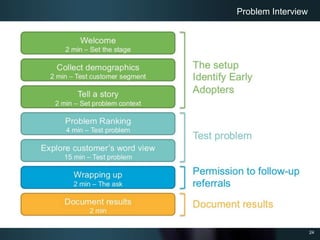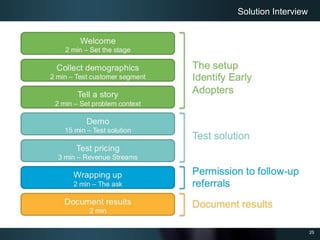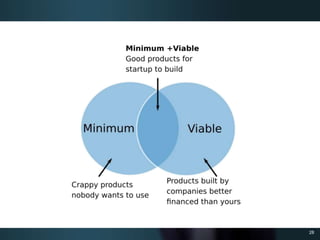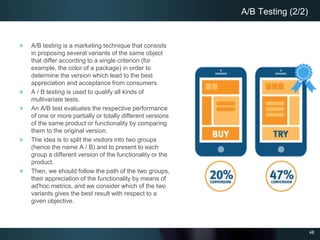The document outlines the principles of the Lean Startup methodology, emphasizing lean thinking to improve efficiency and value delivery in startups by reducing waste and aligning customer satisfaction with employee engagement. Key methodologies discussed include customer development, minimum viable product (MVP), and the importance of measuring progress through validated learning and metrics. The document also explores scaling agile practices within organizations and highlights the transition from startup to established company.
